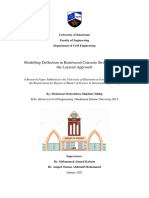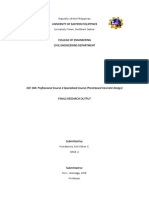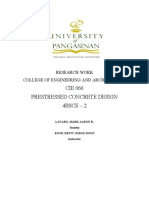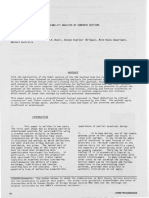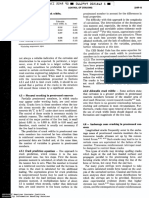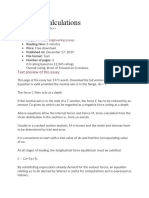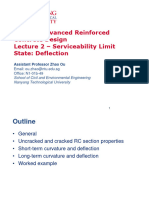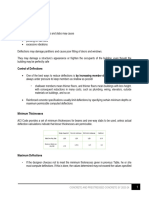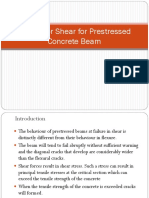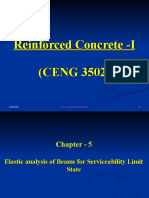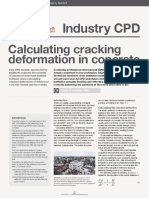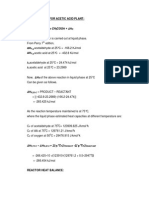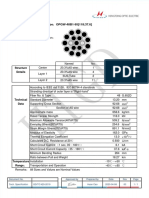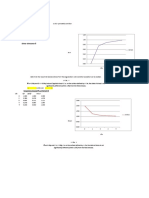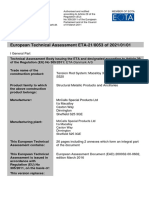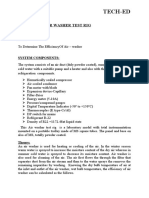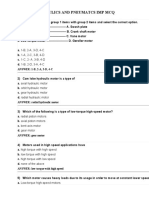0% found this document useful (0 votes)
25 views18 pagesPost Cracking 2slides
The document discusses the flexural behavior of prestressed concrete structures, focusing on the moment-curvature relationship and deflections in the post-cracking range. It outlines the effects of prestressing, shrinkage, and cracking on the moment capacity and deflection calculations, referencing AS 3600-2009 guidelines. Additionally, it provides methods for analyzing cracked sections and calculating deflections using both rigorous and simplified approaches.
Uploaded by
yongwang1993Copyright
© © All Rights Reserved
We take content rights seriously. If you suspect this is your content, claim it here.
Available Formats
Download as PDF, TXT or read online on Scribd
0% found this document useful (0 votes)
25 views18 pagesPost Cracking 2slides
The document discusses the flexural behavior of prestressed concrete structures, focusing on the moment-curvature relationship and deflections in the post-cracking range. It outlines the effects of prestressing, shrinkage, and cracking on the moment capacity and deflection calculations, referencing AS 3600-2009 guidelines. Additionally, it provides methods for analyzing cracked sections and calculating deflections using both rigorous and simplified approaches.
Uploaded by
yongwang1993Copyright
© © All Rights Reserved
We take content rights seriously. If you suspect this is your content, claim it here.
Available Formats
Download as PDF, TXT or read online on Scribd
/ 18
